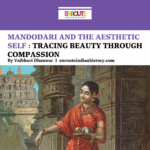Beyond the Devi: Can the State of West Bengal Truly Worship its Women?
- EIH User
- August 30, 2024
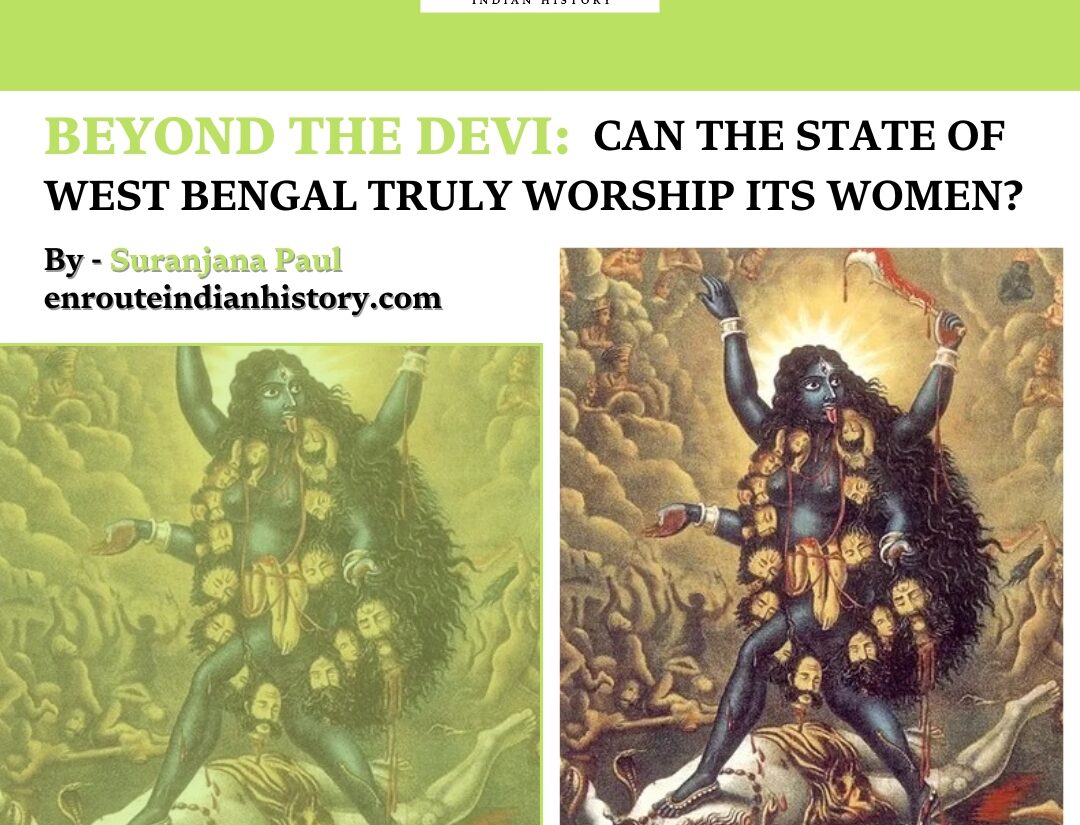
Durga Puja is just around the corner; people are preparing themselves to celebrate the biggest festival of the state. When preparation and excitement are on top of the roof, the most unexpected incident has shattered the whole state, as well as the country. On the 9th of August, the woman PGT intern doctor of the RG Kar Medical College and Hospital was brutally raped and murdered in the seminar room of the hospital building. As an outrage of this sexual assault and murder of a young doctor, the people of Bengal, mostly women, occupied the streets by organising different rallies and protest programs. This is not the first time that women of West Bengal have experienced this kind of horrifying incident. If we only highlight the triggering cases, we will also find a long list. (Here I am mentioning all those incidents that I have found horrifying as a woman, and these cases are also related to political controversies). 1977 Archana Guha, 1990 Bantala case of sexual assault of three women officers and one of them were murdered, 2006 case of Tapasi Malik, 2012 Park Street gang-rape case, a year after the Park Street incident, there was another crime against women, in 2013 Kamduni and 2024 RG Kar, in between these incidents, there are several cases in West Bengal that have appeared in front of our eyes.
Interestingly, people of this state worship different goddesses for different purposes in various regions. Durga To Banabibi, Middle-aged Bengali literature to myth and legends of day-to-day life, presence of goddesses everywhere in Bengal. They can be Brahmanical goddesses or Subaltern goddesses but people of Bengal believe them and worship them.
Strangely, Goddesses represent Shakti, which means power, strength, force, capability, potency and energy according to the Samsad Bengali to English Dictionary. In Bengal, the Kali Lineage is popular along with other peaceful goddesses like Laxmi or Saraswati. Kali Lineage is the source of wisdom and liberation. Bengalis worship the fierce nature black goddess, who is known as Kali. In Kolkata, there are numerous Kali temples along with Dakkhineswar and Kalighat. Apart from Kali, the people of Bengal worship other goddesses who are fierce in nature, such as Chandi, Chamunda, Bhadrakali, and Bhairavi. The Bengali word ‘rakto’ which means blood is associated with Chamunda. Even the image of Kali is not likeable. She is completely naked and covered with ashes and a long tongue which is poised as if to lick. Her eyes are as scary as her garland of fifty heads. Altogether, the portrait of Kali represents the wildness, destructiveness and ferociousness. She is the patron of witches and thugs. People refer to Kali to stand against the patriarchy and its social norm.
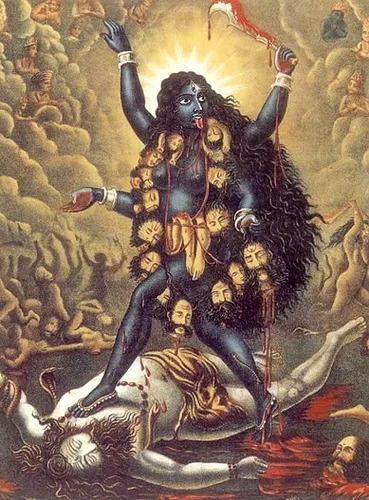
Kali
(Source: Medium)
Surprisingly, the people of Bengal worship the fierce form of Durga, who is known as Mahishasurmardini where she killed Mahishasur, the buffalo demon with Trishul.
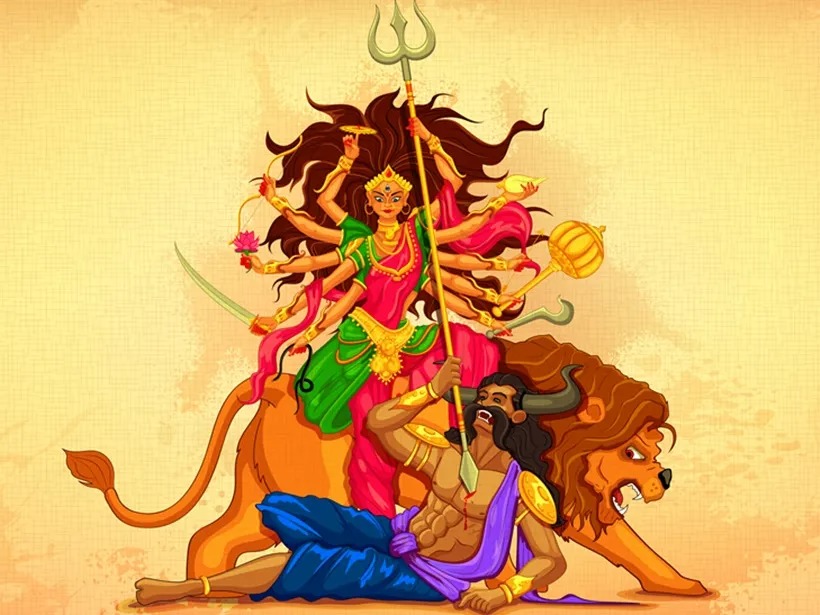
Mahishasurmardini
(Source: The Indian Express)
In rural Bengal, people worship several goddesses who have a complicated relationship with Bramhinisn. Kali is also a part of folk Shaktism, who is dark and powerful. Another popular goddess in rural Bengal is Manasa, she is a snake goddess. She is ruthless to those people, who refuse to worship Manasa but she is kind to her devotees. Even in the Manasa Mongol Kavya, Devi Mansa continued the war against the powerful Chand sowdagar to gain her respect in the society by the devotion of the Chand sowdagar.
Chandi, the hunter’s goddess and Shitala, the goddess of smallpox are also worshipped by the people of Bengal. In Bengal, several goddesses stand against the men or fight against the men and they are fierce in nature and people worship them with respect. After analysing the nature of goddesses and their popularity, the question remains the same: Are the men of Bengal truly worshipping the goddesses or do they just do it as a habit or as a ritual? Or the worship of women in Bengal can help to reduce the crime against women?
There is a famous tradition in Bengal, especially in Belur Math, where a little young girl, whose menstruation has not started yet, is worshipped as devi on the day of Asthomi. This tradition is called ‘Kumari Puja’.
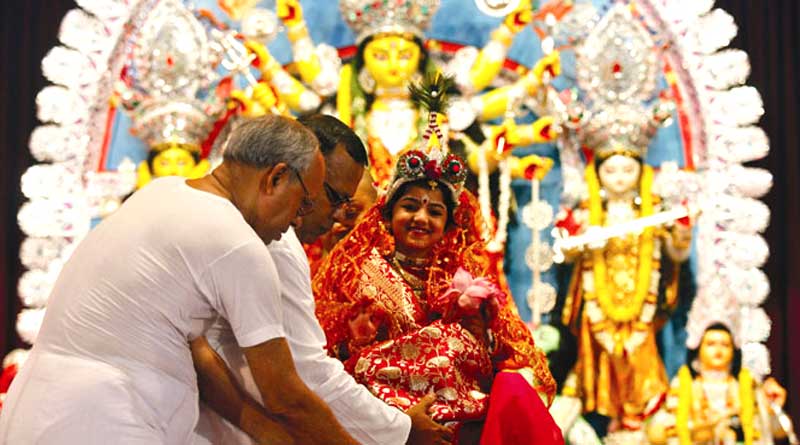
Kumari Puja
(Source: Sangbad Pratidin)
Before starting menstruation or in the young stage the women are adored as Devi because they are pure but when they are growing old and turning into a ‘body’, they can be consumed by the patriarchal society. Worship of Mahishasurmardini, the fierce form of Durga, who fights against the demon with courage, is presented as the strong women figure against the devil but the whole established ‘feminine’ narrative is destroyed by the Kumari Pujo. Submission to the patriarchal society is very clear on the day of Asthomi through the ritual. Paradoxically, this ritual is not able to provide safety to the young girl. Different kinds of cases of abuse of minor girls have appeared in front of our eyes.
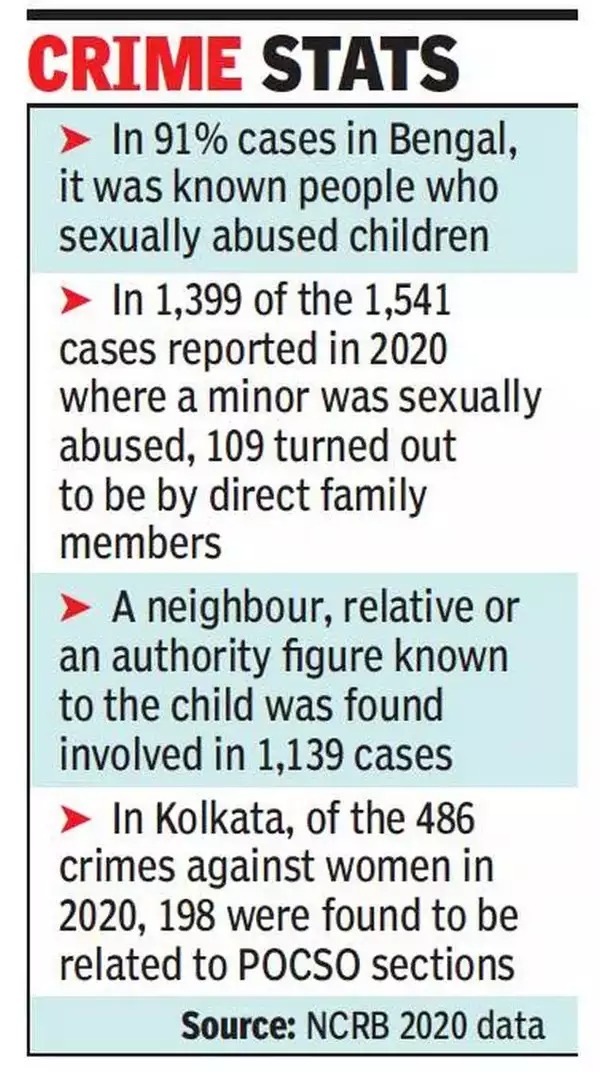
(Source: Times Of India)
Now the answer to the second question is clear, the worship of women in Bengal can not help to reduce the crime against women. However, replacing a woman’s individual identity by enforcing the status of Devi on the women is itself a patriarchal act which is also grossly discussed in several platforms.
Deifying a woman or constructing her as a mother has happened under the male gaze for ages. In our society women are to be protected or respected or adored as mothers or goddesses but what do women get from the male-dominated society when they are not confining themselves into mother or goddess identity? They are also adored by men to prove male power. In this patriarchal society, Women are objects and rape is a tool to show men’s superiority. Crime against a woman is nothing but a reminder to the women that you women are living in a male-dominated society where you are under the control of men. West Bengal is not the exception, it might be slightly less in the number of cases of crime against women, than other states of India. This problem can not be solved by the worship of goddesses because this problem is systematic and deep-rooted which is directly related to power.
In the history of Bengal, women took up arms to fight against the imperial power. Not only, they fought against the British imperial power, but also they fought against social patriarchal norms, through writing or different activities. Matangini Hazra, Pritilata Waddeder, Santi Ghosh, Suniti Chowdhury and others who fought against British colonial power at the forefront whereas Begum Rokeya, Rassundari Devi and other women were fighting against male patriarchal societal oppression. Even in the 1946 Tebhaga movement, a large number of women participated on equal footing with men and women played a key role in this movement. It is heart-rending that after passing through such a revolutionary history, women of Bengal are still facing sexual abuse in different sectors. Socio-political changes through constant struggle by women in every sector can be a solution to this problem.
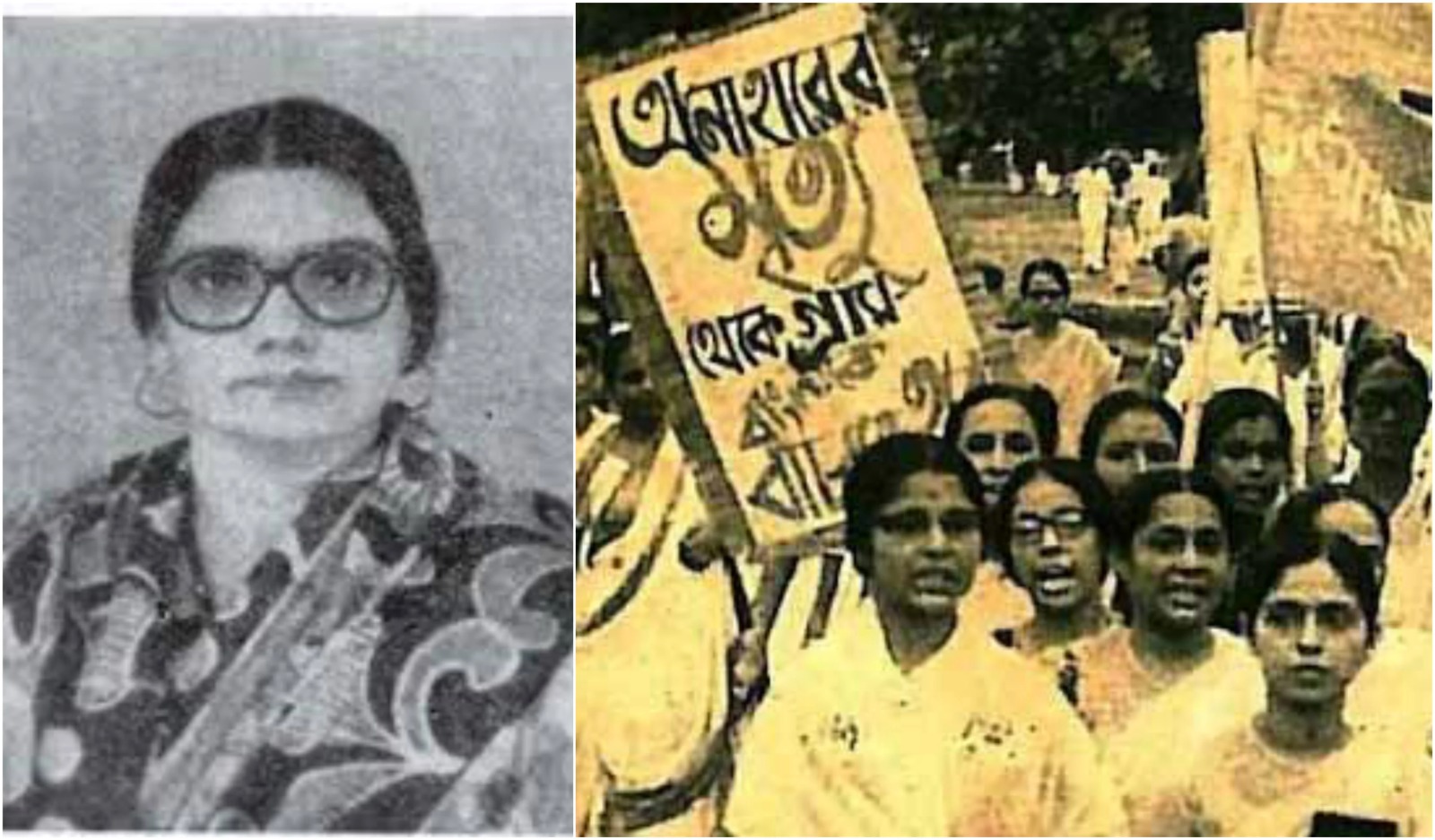
(Source: Feminism In India)
Disclaimer: Due to the word limit, I can’t talk about all incidents, so I have highlighted some of the incidents which I feel are terrifying as a woman and also those incidents which are related to political controversies. I am not tagging any incident as minor or major. Rape is a heinous crime and as a writer, I have tried to deal with these sensitive issues very carefully. Most of the time I replace the word ‘Rape’ by using ‘Crime against women’ or ‘Sexual assault’.
REFERENCE
Sarkar, T., 1991. “Reflections on Birati Rape Cases: Gender Ideology in Bengal.” Economic and Political Weekly, vol. 26, no. 5, 1991, pp. 215–18. JSTOR, Available From: http://www.jstor.org/stable/4397275. [Accessed 23 Aug. 2024].
Taneja. S., 2014. Kali and the patriarchal fears. Medium. 6 January 2014. Available From: https://medium.com/folklore-and-myths/kali-and-the-patriarchal-fears-240ec4cae24e. [Accessed 23 Aug. 2024].
McDaniel, J., 2004. Offering flowers, feeding skulls: popular goddess worship in West Bengal. Oxford University Press. Available From: https://tantriklaboratories.com/wp-content/uploads/2015/05/McDaniel_June_-_Offering-Flowers_Feeding_Skulls__Popular_Goddess_Worship_in_West_Bengal.pdf. [Accessed 23 Aug. 2024].
Khasnabish, U., 2016. Kumari Holei ‘Debi’rupe Aradhona! Noile Bhogyo. Sangbad Pratidin. 8 October 2016. Available From: https://www.sangbadpratidin.in/editorial/why-only-a-virgin-girl-is-worshipped-as-devi-durga/ [Accessed 23 Aug. 2024]
The Economic Times. 2022. Kolkata at bottom with least number of rape cases among 19 Indian metropolitan cities. The Economic Times. 30 August 2022. Available From: https://economictimes.indiatimes.com/news/india/kolkata-at-bottom-with-least-number-of-rape-cases-among-19-indian-metropolitan-cities/articleshow/93871815.cms?from=mdr. [Accessed 23 Aug. 2024]
Roy, R., 2024. Dhorson Aar Younokamonake Ek Asone Bosano Ek Ghreenyo Probonotar Atisorolikaran. Sangbad Pratidin. 25 August 2024. Available From: https://robbar.in/recent-affairs/an-article-about-sex-and-rape-are-not-the-same-thing/?fbclid=IwY2xjawE5BWxleHRuA2FlbQIxMQABHQ__JIpntr0XkozBsvgxDPbjSMCxeNvyOY3bEITec7kzJAoz0FrLqUbV3Q_aem_IILsKOnWAbCtlAlVtBC-qw. [Accessed 25 Aug. 2024]

